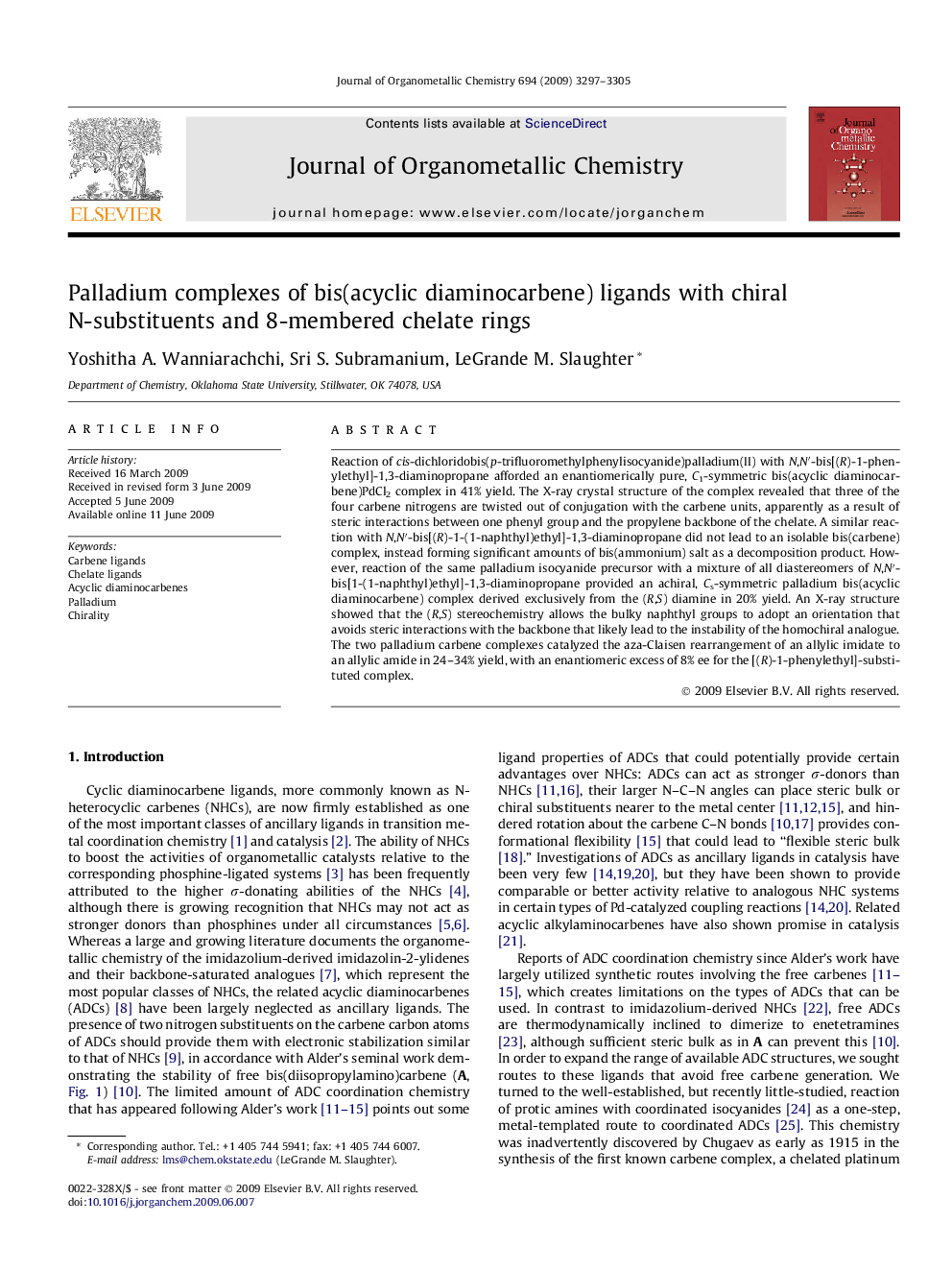| Article ID | Journal | Published Year | Pages | File Type |
|---|---|---|---|---|
| 1326289 | Journal of Organometallic Chemistry | 2009 | 9 Pages |
Reaction of cis-dichloridobis(p-trifluoromethylphenylisocyanide)palladium(II) with N,N′-bis[(R)-1-phenylethyl]-1,3-diaminopropane afforded an enantiomerically pure, C1-symmetric bis(acyclic diaminocarbene)PdCl2 complex in 41% yield. The X-ray crystal structure of the complex revealed that three of the four carbene nitrogens are twisted out of conjugation with the carbene units, apparently as a result of steric interactions between one phenyl group and the propylene backbone of the chelate. A similar reaction with N,N′-bis[(R)-1-(1-naphthyl)ethyl]-1,3-diaminopropane did not lead to an isolable bis(carbene) complex, instead forming significant amounts of bis(ammonium) salt as a decomposition product. However, reaction of the same palladium isocyanide precursor with a mixture of all diastereomers of N,N′-bis[1-(1-naphthyl)ethyl]-1,3-diaminopropane provided an achiral, Cs-symmetric palladium bis(acyclic diaminocarbene) complex derived exclusively from the (R,S) diamine in 20% yield. An X-ray structure showed that the (R,S) stereochemistry allows the bulky naphthyl groups to adopt an orientation that avoids steric interactions with the backbone that likely lead to the instability of the homochiral analogue. The two palladium carbene complexes catalyzed the aza-Claisen rearrangement of an allylic imidate to an allylic amide in 24–34% yield, with an enantiomeric excess of 8% ee for the [(R)-1-phenylethyl]-substituted complex.
Graphical abstractReaction of a palladium bis(isocyanide) complex with a diamine bearing (R)-1-phenylethyl N-substituents affords a chiral, C1-symmetric, bis(acyclic diaminocarbene) chelate complex in one step. Increased bulk on the amine disfavors homochiral bis(ADC) ligands, though an achiral analogue was isolable.Figure optionsDownload full-size imageDownload as PowerPoint slide
